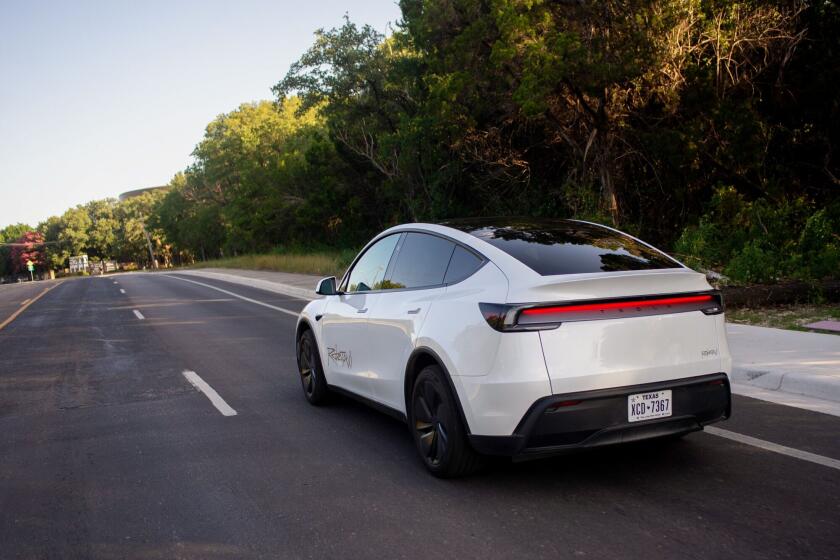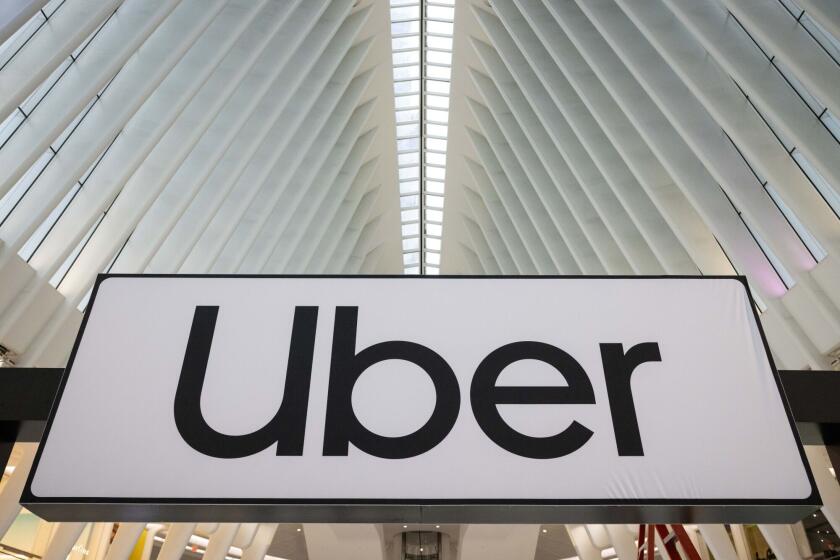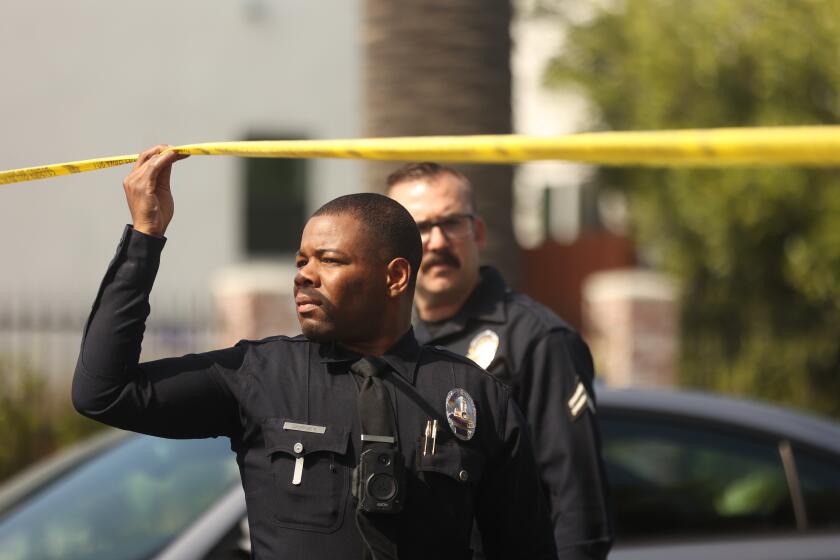L.A. panel OKs plan to cut port truck soot
- Share via
The Los Angeles Harbor Commission on Thursday unanimously approved a phased ban of old-model trucks, a move that is expected to reduce harmful diesel emissions by 80% within five years but also ignite controversy among shippers, drivers, trucking companies and environmentalists.
The Clean Truck Program would require 16,500 aging short-haul trucks that move goods from wharves to warehouses and train yards to meet federal 2007 emission standards by 2012 through replacement or retrofitting, authorities said.
The $1.8-billion plan would begin next October by prohibiting trucks manufactured before 1989 from entering port facilities. An estimated 15% to 20% of the current fleet, mostly driven by independent operators, fall into that category, port authorities said.
By 2012, no truck manufactured before 2007 would be allowed in port facilities.
The program is the most ambitious component of the landmark Clean Air Action Plan proposed last year by the ports of Los Angeles and Long Beach, and would require the Los Angeles City Council’s passage of an ordinance adopting the measure.
“This is only the first piece; there’s a lot more we have to come to agreement on,” Geraldine Knatz, executive director of the Port of Los Angeles, said. “But we’re moving forward.”
The board’s action set the stage for a public dispute over who will pay for and operate thousands of new trucks to service the nation’s busiest port complex, which handles more than 40% of the goods imported to the United States.
Although Knatz said the port is prepared to finance the fleet, she added that “we can’t subsidize it forever.” The truckers, whose average round trip is about 25 miles, are calling for a concession program that would force shipping companies to hire them as employee drivers. Shippers argue that such a system would be an invitation for the International Brotherhood of Teamsters to organize thousands of local drivers.
“Common sense suggests the people making the most money off this, the shippers, ought to be the ones paying those costs and making employees out of independent drivers,” said Rafael Pizarro, senior consultant for the Coalition for Clean Air. “In any case, opponents and supporters alike will have to show their true colors on all of these issues.”
Cecilia Ibarra, assistant operations manager for the trucking company Total Distribution Service of Wilmington, disagreed. “We want cleaner air as much as anyone, but the board’s actions may drive us into litigation,” she said. “A concession program is a step toward unionization. I can already hear the ka-chink, ka-chink, ka-chink in union coffers.”
The five-member Harbor Commission plans to vote Dec. 14 on a concession program and other elements of the clean-air plan, including a cargo fee to fund the plan’s requirements, a mechanism to fund replacements for banned trucks and a security system for transportation workers. On Monday, the Long Beach Board of Harbor Commissioners is scheduled to vote on a clean-truck program similar to the one approved Thursday.
The short-haul drivers, most of them Spanish speakers with low incomes, expressed mixed feelings about the truck ban. They said they supported efforts to improve air quality but worried about having to bear financial obligations that could force them out of their jobs and impair movement of imported goods. Most of their trips are to warehouses and train yards south of downtown Los Angeles.
“If the port makes me responsible for the costs of a new truck, I’ll have to find a new line of work,” Felipe Lopez, an independent owner-operator who contracts with companies to move containers, said in an interview.
Max Palma, a port trucker of 15 years, told the board: “If you leave it up to us owner-operators, your plan will fail. It would be difficult to buy and maintain a new truck without working seven days a week.”
Calls to reduce port pollution have been driven in part by the increase in trade at the two ports.
The value of containerized trade there soared from $74 billion in 1994 to $305 billion in 2006, led by imports of automotive vehicles, computers and office machines, furniture, clothing and toys. Port trade is expected to double by 2020, officials said.
Port authorities are eager to reinforce their Pacific Rim dominance with long-delayed projects that would enlarge terminals and rail yards, widen roads and add a marine terminal for crude oil. The Port of Long Beach wants to replace an aging bridge at a cost of about $864 million.
Unless port authorities can clean the air, however, they will probably face protracted legal challenges.
“The people of San Pedro and Wilmington have been subsidizing port growth with their lungs,” said S. David Freeman, president of the L.A. Harbor Commission. “We absolutely have to get this plan done to justify the expansion of the port.”
The port complex spews more soot and smog than half a million cars, a refinery and a power plant combined, port authorities said. Port trucks produce 30% to 40% of that pollution, which has been linked to global warming and to higher risks of cancer, bronchitis and other ailments. State air quality and health experts have linked 2,400 premature deaths a year to emissions produced by the ports.
The Clean Truck Program includes several new requirements for moving freight at the ports. Trucks would be granted access to terminals only if they were registered with the ports and had a radio frequency identification tag. In addition, truck owners would have to register their vehicles with a new San Pedro Bay Ports Drayage Truck Registry by June 30, 2008.
Elina Green, project manager for the Long Beach Alliance for Children with Asthma, was not impressed with Thursday’s action.
“I don’t understand why the board decided to vote on just the clean-truck portion of the clean-air plan,” she said. “It’s hard not to think they were pandering to the environmental community by throwing us a bone, as though we would be happy with just a progressive ban.”
Knatz said the board was trying to meet the concerns of its constituents.
“We’re between a rock and a hard place,” she said. “Not everyone is going to be happy, but we have to move forward.”
--
(BEGIN TEXT OF INFOBOX)
Port cleanup plans
The ports of Los Angeles and Long Beach plan to reduce harmful emissions by phasing out older truck models from the fleet of 16,500 that services harbor terminals.
Oct. 1, 2008: Trucks manufactured before 1989 would be banned.
Jan. 1, 2010: Trucks manufactured from 1989-93 would be banned; 1994-2003 model trucks that have not been retrofitted also would be banned.
Jan. 1, 2012: All trucks manufactured before 2007 would be banned.
Source: Port of Los Angeles
Los Angeles Times
More to Read
Sign up for Essential California
The most important California stories and recommendations in your inbox every morning.
You may occasionally receive promotional content from the Los Angeles Times.














